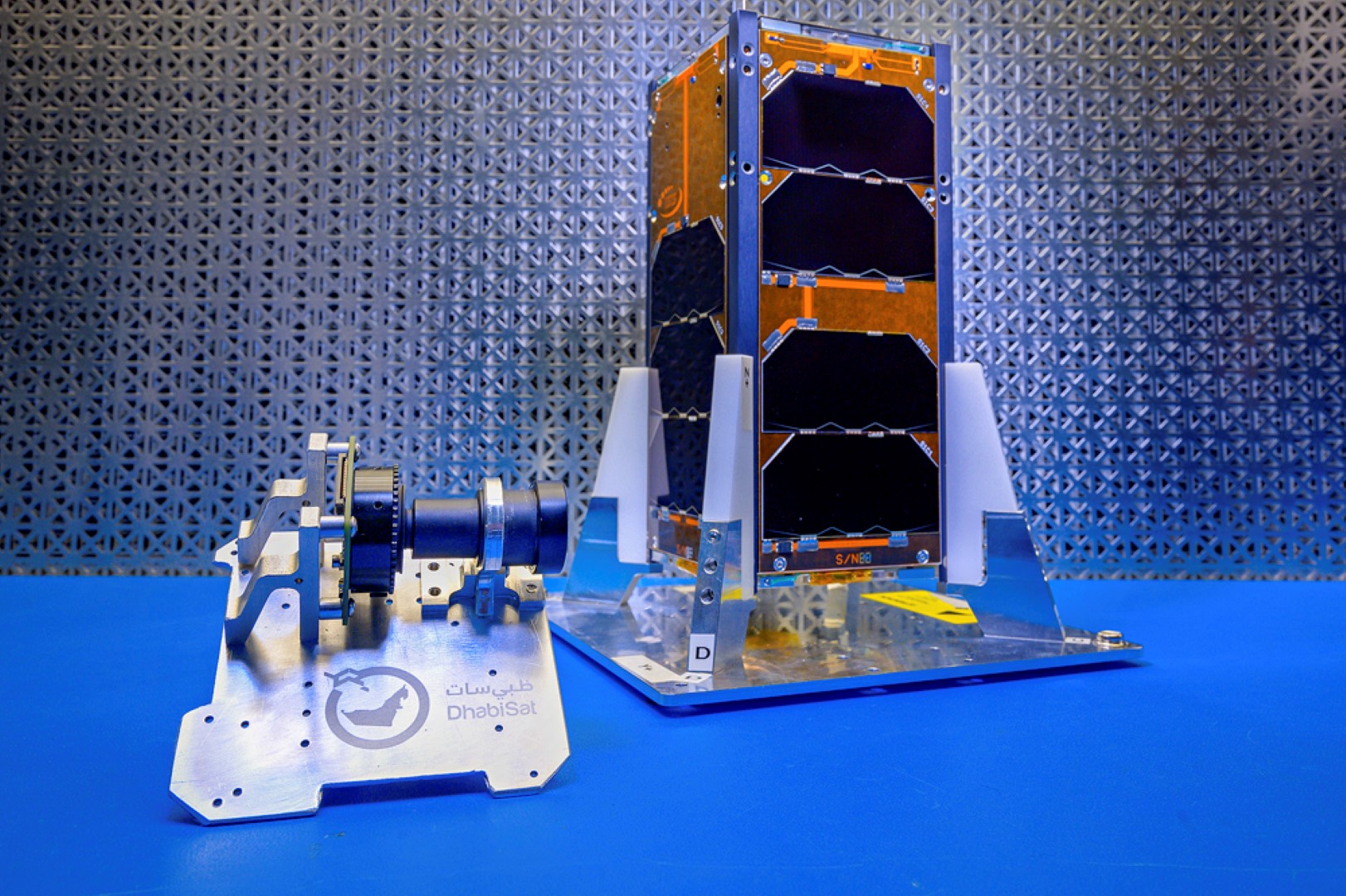Khalifa University of Science and Technology today announced DhabiSat, the second CubeSat, designed and developed by Khalifa University students with support from Al Yah Satellite Company (Yahsat) and Northrop Grumman, is getting ready for launch on 20th February from aboard the Cygnus spacecraft.
The primary mission of the second CubeSat, previously known as MYSat-2, is to enable students to design, implement, and test software modules for attitude determination and control systems (ADCS). The work has been conducted at the Yahsat Space Lab, which is part of the Khalifa University Space Technology and Innovation Center (KUSTIC).
DhabiSat will assess the accuracy of various ADCS pointing control strategies and validate the same by taking images using a digital camera onboard pointed in specific directions. The new ADCS algorithms shall improve the pointing accuracy of the CubeSat and its response time to attitude changes as compared to conventional algorithms. In terms of system resources, DhabiSat will require less power to achieve the targeted pointings and if successful, the algorithms will gain flight heritage on board DhabiSat, which then can be used as a baseline in future CubeSat missions.
DhabiSat will take off from the Wallops Flight Facility in Virginia, US, on the Northrop Grumman Antares rocket, to the International Space Station (ISS) on 20 February 2021. It will then be deployed from the resupply spacecraft Cygnus NG-15, following departure from the ISS approximately two to three months later.
Khalifa University’s MYSat-1, the first mission that was conceptualized, designed, integrated, tested and operated as part of an academic programme in the UAE, was deployed in February 2019. It carried an experimental coin cell battery, based on technology developed by Khalifa University students along with a VGA camera developed at the Yahsat Space Lab based on commercial off-the-shelf (COTS) components.







